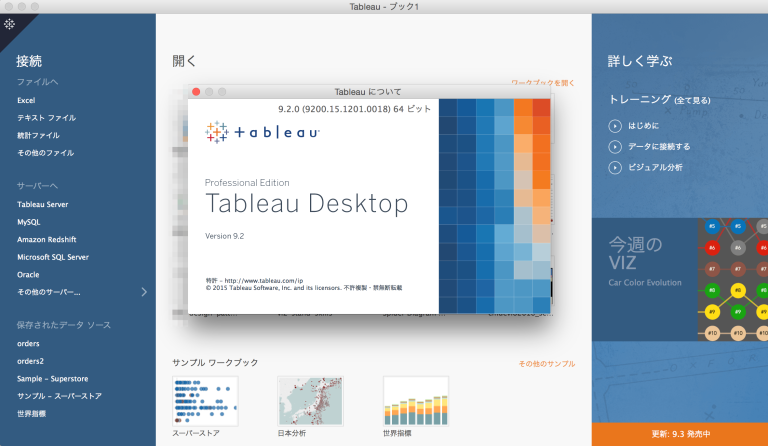



I’ve seen people use TDEs instead of file-based sources to make distribution of packaged workbooks easier. A related case is that since a TDE is highly compressed it can be a lot smaller than the original uncompressed source. If we extract the data then only the necessary data for the workbook is in the TDE. For file-based sources when we include the files in a TWBX it’s the whole file, so for an Excel file that means that every worksheet in that file is included in the TWBX.Extracts can be configured to aggregate the data and therefore hide record-level detail.We can set up the extract to only include fields used in the workbook, in other words we can exclude columns from the extract.We can create extract filters on TDEs so only the necessary records are included.There are four cases where extracts can effectively improve security by reducing what data is made available: Another case is situations where the data is stored in multiple tables (potentially across multiple data bases) and a UNION query is used to generate a result that is too big for a live connection but fine for a TDE. whereas a TDE can potentially handle billions of records. MS Excel is limited to 1M records, MS Access tops out anywhere in the 100s of thousands to couple M records depending on the complexity of the table, etc. Data volumes could be such that millions of records per week of raw data that would be too slow to run live Tableau queries on might be aggregated in a TDE down to dozens or hundreds per week based on some set of categories/dimensions in the data.The Tableau queries to the live connection might slow down operational queries too much, so having Tableau only query at scheduled extract refresh times is preferable.The new connector takes advantage of Tableau’s data extract (data engine) technology to create a data extract in the background, that’s why the first connection can be slow and then creating an extract can be instantaneous. That is no longer the case with the new Excel/text connector. Note that older posts (prior to the release of Tableau v8.2) on extracts will talk about them being faster than raw Excel/text connections because at the time the “legacy” aka MS JET engine was used. I regularly see 100x improvement in load times using Tableau data extracts over MS Access, to the degree that my muscle memory is tuned to making an extract as the first thing I do after connecting to an Access-based source. Because data extracts are highly optimized for queries they can be much, much faster than a live connection.For example a production system is on a slow network connection so a TDE can be created locally and only have to go over the slow network.There are a number of variations on this: The extract can be published (whether in a viz or as a published data source) to Tableau Server or Online, or saved in a Tableau packaged workbook (TWBX) or packaged datasource (TDSX), or sent “naked” as a TDE file. Sometimes a Tableau viz can’t have live connection to a production system, for example when you want to share a viz with someone not inside your premises. However there are many situations where that isn’t a workable solution, so Tableau has created Tableau Data Extracts to support situations where a live connection to the source is: My preference is to first consider using a live connection because extracting data adds another step to the data delivery chain. a live connection, here’s a cleaned-up version of my notes: Why Use a Tableau Data Extract? I recently answered a question for a new Tableau user on when to use a Tableau Data Extract (TDE) vs.


 0 kommentar(er)
0 kommentar(er)
